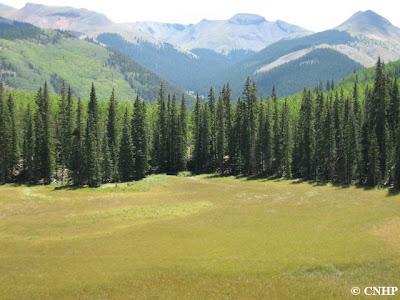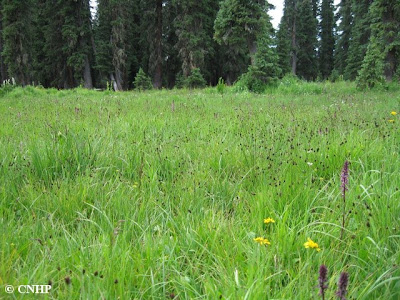This site was visited during our Larimer County Inventory of 2004. The red sandstones of the Fountain Formation overlain by Ingleside Formation form the hogback cliffs that are the dominant feature of this site. These cliffs extend at least six miles from Devil's Backbone to Horsetooth Reservoir. The dominant vegetation along the cliffs is mountain mahogany (Cercocarpus montanus) with a variety of native grasses. Bell's twinpod (Physaria bellii), a globally imperiled (G2/S2) plant, is found patchily throughout the site. Where it occurs, it grows from the base of the cliff to the toe of the slope and is most abundant where vegetation is sparse such as in areas of active erosion. This site supports a good (B-ranked) occurrence of Bell's twinpod. The species is known only from shale or sandstone hogbacks along the foothills of the Front Range from Jefferson County north to near the Wyoming border. Bell's twinpod has long been considered to be primarily restricted to Niobrara shale, so occurrences on Fountain and Ingleside formation sandstones such as within this Potential Conservation Area are little studied.
Bell's twinpod (Physaria bellii) in fruit






















